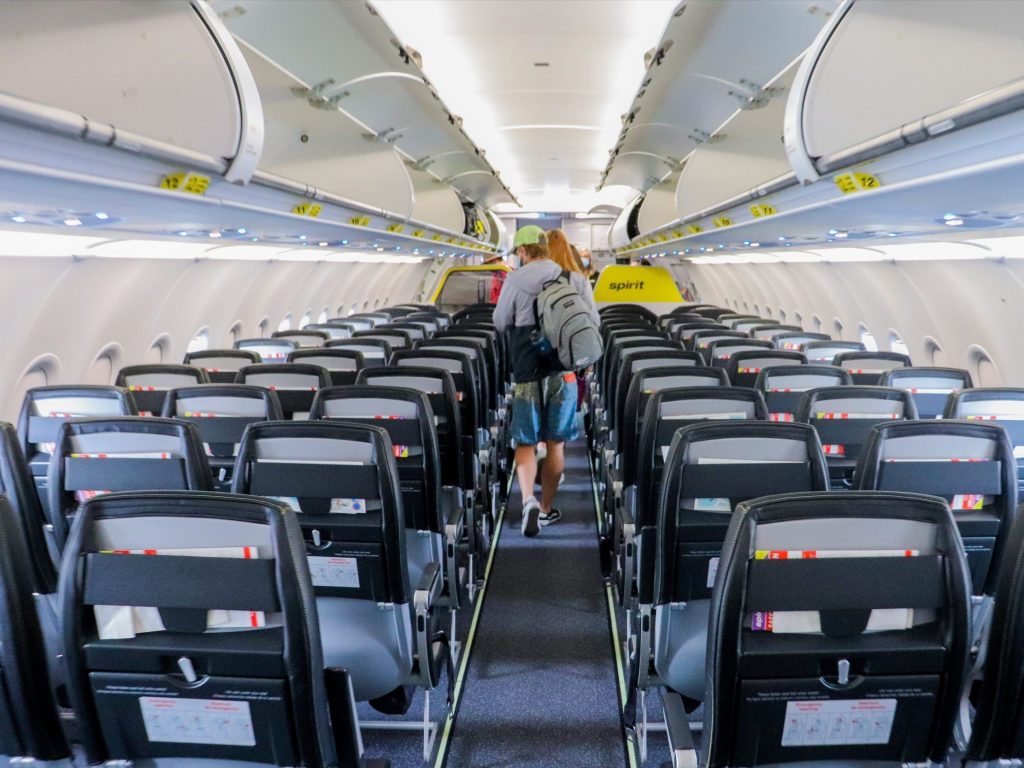- JetBlue Airways and Spirit Airlines are set to merge in a groundbreaking $3.8 billion deal.
- Analysts say the merger could be good for consumers in terms of product but low fares aren't a sure thing.
- Third Bridge analyst Christopher Raite says the "JetBlue effect" will impact legacy airline ticket prices.
Spirit Airlines and JetBlue Airways have agreed to merge and create the fifth largest airline in the US, signaling the end of one of the most infamous brands in the sky, an accellerated expansion of the "JetBlue effect," and the beginning of an era of uncertainty for customers of both airlines.
While Spirit's hundreds of planes and the pilots that fly them will suddenly be available to JetBlue once the deal closes, amounting to a shot in the arm for the growing New York-based carrier, one thing is still up in the air: fares. JetBlue CEO Robin Hayes insists the merger will enable JetBlue to "grow faster."
"We can go head-to-head with the legacies in more places to lower fares and improve service for everyone," he said in a Thursday press release.
Henry Harteveldt, travel analyst and president of Atmosphere Research Group, told Insider that the large presence of Frontier — the only large ultra-low-cost carrier on the map after Spirit merges — could put pressure on JetBlue to keep fares low.
Here's what customers can expect if the deal goes through.
Spirit planes will become JetBlue planes

According to JetBlue, the move to acquire Spirit will offer customers more choice because of the duo's "complementary networks and fleets."
Both carriers operate Airbus A320 family aircraft. If merged, JetBlue will have a total of 438 aircraft with 300 more on order. Moreover, the combined networks will expand the New York-based carrier's route map to 125 destinations in 30 countries, resulting in over 1,700 daily flights, JetBlue said.
While JetBlue and Spirit are both low-cost carriers, they operate differently. Spirit has maintained a bare-bones, a la carte business model that requires customers to pay for extras, like luggage and food. Meanwhile, JetBlue offered a more full-service model with business class in some planes, seatback screens, free WiFi, and free drinks and snacks.
According to the carrier, all of Spirit's planes will be retrofitted with JetBlue's cabin, meaning no more traveling hours on slim, hard seats.

Harteveldt told Insider that JetBlue has proven that it can be "nimble when completing cabin upgrades," meaning the Spirit planes that need to be retrofitted will be done quickly. However, he emphasized that the transition will still take time.
Third Bridge senior analyst Christopher Raite told Insider that JetBlue's acquisition of more aircraft is good for the consumer because they get them sooner, which means more planes and pilots are available to run a reliable schedule.
JetBlue will dominate the East Coast, but more planes mean it can expand elsewhere

Currently, JetBlue and Spirit have a large presence on the East Coast. Spirit has a stronghold in places like Fort Lauderdale and Los Angeles, and JetBlue wants to capitalize on those key markets, as well as others, including Orlando and San Juan.
Moreover, the airline sees Spirit's strong presence in the Big Four airline hubs, including Las Vegas, Dallas, Houston, Chicago, Detroit, Miami, and Atlanta.
According to Harteveldt, once merged, the airlines will evaluate their routes and potentially consolidate flights, meaning fewer frequencies on certain routes depending on demand.
He explained the excess aircraft currently concentrated in the eastern US could then fly elsewhere over time, which is important to JetBlue becoming a stronger competitor in other markets, like Chicago O'Hare and Dallas/Fort Worth.
Moreover, the merger could help JetBlue operate more transcontinental flights, so its superior product, coupled with the coast-to-coast routes, could lure more business travelers, Harteveldt said.
Fares could go up, but Frontier could keep them at bay

Harteveldt told Insider that Frontier may put pressure on JetBlue to keep fares low.
"JetBlue could adapt certain pricing strategies that Spirit has been successful in using and apply those discount strategies to JetBlue flights, he told Insider. "So, it's possible JetBlue could become an even larger discount airline than it already is."
Harteveldt also said other low-cost carriers primarily operating on the East Coast, like newcomer Breeze Airways, could impact fares.
"If Breeze continues to grow in the eastern US, Breeze and Frontier could serve as price leaders and put pressure on not only a combined JetBlue and Spirit to keep their airfares down, but also other airlines as well," he said.
Raite echoed Harteveldt, saying the "JetBlue effect" has been proven to work, which will prompt legacy airlines like Delta and United to keep fares low to counter the strong low-cost competition.
"Spirit Airlines' ultra-low-cost model has been disruptive to competitors in their targeted markets," he said. "However, there is a significant cost difference between JetBlue and Spirit that will be further complicated by JetBlue's recent moves into first-class and international services."
Spirit's loyalty program will likely be scrapped

Spirit's "lackluster" loyalty program will be abandoned in the merger, with Spirit points being converted to TrueBlue points, which are worth more than Spirit's, John Taylor Gamer, CEO, and founder of credit card rewards app Card Curator, said.
He explained this will give Spirit points more value but said it's possible JetBlue will convert the points at a lower value due to Spirit's "lack of super loyal flyers."
Harteveldt said he will be watching JetBlue's handling of Spirit's $9 discount club, which the airline says is a very successful program.
"If the program works well for Spirit, then it may work well for JetBlue, and this is perhaps another way JetBlue could introduce more fare competition as it combines with Spirit," he said.
